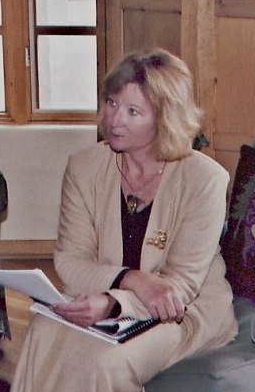
08 Feb Shrink Rap: What’s in a Pronoun?
Telluride-based Dr. Susannah Smith goes in-depth to parse gender pronouns.

Are you a she, he, or they?
And how does one know?
We as a society and community are beginning to shift our awareness: not everyone fits into the binary, heterosexual stereotypes that we grew up with. Our sexual identities, as well as our gender identities, are as varied, numerous, and complex as the nuances of the rainbow.
The LGBTQ movement has made much progress in the past 10 years. However, living as a non-binary person is still not easy for many, especially for children and adolescents, and for those who live in conservative and uneducated communities.
LGBTQ teens, for example, are twice likely as their heterosexual peers to use drugs and alcohol; half as likely to say they are happy; and have much higher incidence of depression (4-5 times more than their heterosexual counterparts); self-harm, eating disorders; and suicide (30% attempt suicide). Their primary source of stress is from being a minority: they are often subjected to physical violence, discrimination, social disapproval, and even legal sanctions. In communities that are highly prejudiced, the mortality rate of non-binary people is 12-18 years shorter (Mailman School of Public Health, Columbia University). They primarily die from suicide, homicide/violence, and cardiovascular disease, indicating the immense amount of tension they have been living under.
While those who identify themselves as gay, lesbian, or bisexual are bullied 3-4 times more than heterosexual teens, almost all teens who identify as transgender are bullied and harassed for sexual orientation and gender expression.
Transgender people have a whopping 40% suicide rate. Children and teens are pressured from birth to act like girls or boys, to play with binary gender appropriate toys, and to dress like one gender or the other. While there is more pressure on boys not to dress as girls, girls have a bit more freedom to behave like “tomboys,” and wear male or nondescript clothing. One can see that we put pressure on people from the time they are born, to act and dress like one sex or the other.
But now we know that so many people are not one or the other. You can be fully identified as a female, but have a sexual orientation towards other females. Likewise, you can be fully identified as male, and have sexual preference for males.
We understand lesbians and gay men much more now than 10 years ago, and society in general accepts and embraces the differences. But being born into the wrong-sex body is even more difficult. A trans-female is someone born into a male body, but who identifies as female. This does not require hormone therapy or sex change surgery. They are just born as a female in a male’s body. Likewise, a trans-male is someone born into a female body who has always identified as male. Transgender refers to anyone who does not feel that their personal identify and gender correspond to their birth sex. They may be straight, lesbian, gay, bisexual, or asexual. To these children, figuring out how they fit in the world can be, and usually is, extremely difficult.
“Intersex” people are born with different forms of sexual anatomy that does not fit the common concept of male or female. Some people are born with two sets of genitalia, both male and female; some have a chromosomal combination different from XY(male) or XX (female), such as XXY; some are born with one set of what looks like male or female organs, but the hormones being released during puberty do not match. In most of these cases, doctors and/or doctors and parents make arbitrary decisions at birth about these “intersex” people, to leave just one set of sex organs so the child would avoid social harassment. But imagine the confusion to the growing child.
Sexual identity and gender orientation are two very different things.
Sexual identity is one’s romantic and emotional attraction to another person; gender identity refers to how one feels about they themselves being a male, female, or other. A transgender woman who is attracted to women would identify as a lesbian; if she were attracted to men, she would identify as a woman who is straight. There are also many people who are bisexual and attracted to people of all gender identities.
Colors of the rainbow!
So, we call trans, non-binary people “they,” instead of “he,” or “she.” If she is trans-female, we call her “she”; if he is trans-male, we call him he. If they do not identify as he or she, we call them “they.”
Using the proper pronoun has a huge effect in helping to heal some of the trauma that non-binary people have been subjected to and have grown up with. A trans person whom you meet may tell you they use “they, them” pronouns. It is important to get used to this new use of pronouns, to honor their identity and right to be that individual.
What can we do to help children who are struggling with their own sexual identity and gender identity? Allow your children to choose their toys, their clothing expression, and their friends, and become aware of your own prejudices and expectation. And learn more about the wide spectrum and array of the human expression of gender identity and sexual preference.

Dr. Susannah Smith
Dr. Susannah Smith is a licensed practicing clinical and forensic psychologist and
organizational development consultant, with offices in Telluride and Ridgway, and a privacy protected telehealth practice. She is licensed in Colorado, California, Louisiana, Mississippi, and Texas and is board-certified. If you would like to contact her, Dr. Smith can be reached at www.creativeteamconsulting.com; shas14@gmail.com ; or 970-728-5234


Sorry, the comment form is closed at this time.